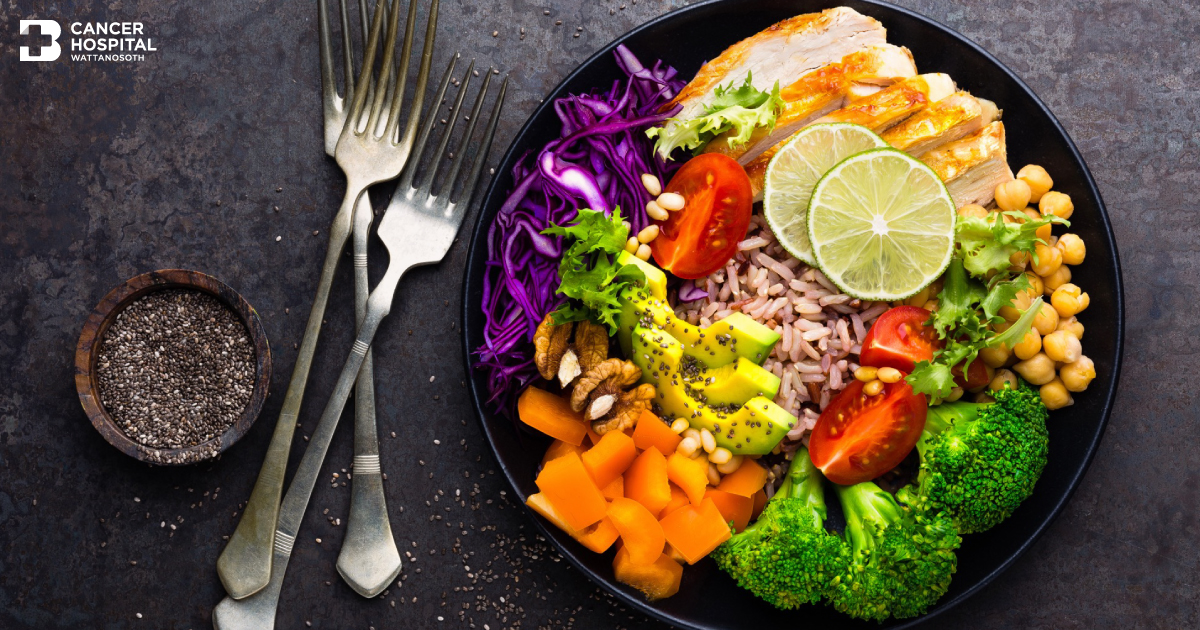

Translated by AI
9 Tips for Cancer-Fighting Foods
Cancer is closer than you think. If you don’t want to increase the risk of cancer, you must eat the right types of food and avoid the wrong ones, which is not difficult to do.
1) Eat a variety of colored vegetables every day
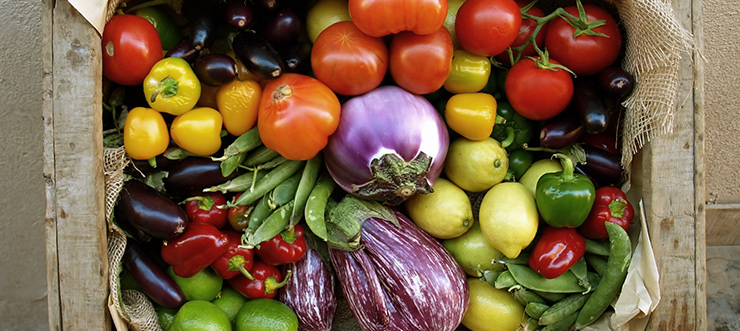
The color of vegetables is not only beautiful, but each color, each type has different benefits for the body and provides different nutritional values. Eating a variety of vegetables or consuming all 5 colors greatly benefits health.
Examples of vegetables and their pigments include:
- Red pigments such as tomatoes contain an antioxidant called Lycopene which helps reduce the risk of prostate cancer, stomach cancer, and lung cancer.
- Yellow/orange pigments such as pumpkins and carrots contain antioxidant carotenoids, rich in vitamins that can counter free radicals in the body.
- Green pigments such as spinach, broccoli, rich in vitamin C, including morning glory, kale, amaranth which have vitamin A and chlorophyll pigments.
- Purple pigments such as purple cabbage, mangosteen, and purple in butterfly pea flowers. These purple vegetables have anthocyanin which helps inhibit cancer-causing substances.
- White pigments such as eggplants, white cabbage, cauliflower, especially cauliflower tips, have high beta-carotene which has properties to eliminate free radicals.
2) Regularly eat fruits
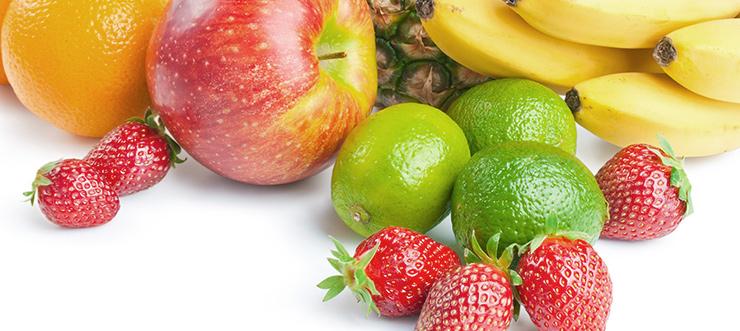
Fruits contain various types of vitamins and minerals beneficial to the body, including dietary fiber that helps the digestive system and excretion system function normally.
Benefits of fruits
- Oranges have vitamins A and C, which are antioxidants that reduce cancer risk.
- Pineapple has vitamin C, beta-carotene, and manganese that help prevent damage from free radicals and are also important for the immune system.
- Papaya has vitamins A, B, and C which help reduce the risk of cancer and aid in the normal functioning of the excretory system.
- Mango has vitamins A and C, which are antioxidants, help in cancer prevention and can also relieve nausea and vomiting.
3) Emphasize whole grains and fiber

Whole grains are those that are unpolished or least polished, maintaining high nutritional value such as vitamins, minerals, phytonutrients, dietary fiber, and various antioxidants.
Examples of whole grains include brown rice, whole wheat, corn, barley, etc. Additionally, dietary fiber in whole grains plays an important role in transporting harmful substances stuck in the intestines out of the body, thus significantly reducing the risk of food-related cancers and colorectal cancer.
Nutritional values of whole grains
- Brown rice provides energy, contains dietary fiber, helps prevent beriberi, angora mouth, reduces the risk of colorectal cancer and helps prevent anemia.
- Barley has vitamin B1, vitamin A, potassium, and dietary fiber, helping to alleviate numbness, heat within the body, nourish the kidneys, lungs, and stomach.
- Beans Various types of beans such as green beans, soybeans, black beans, red beans contain protein and dietary fiber, helping to reduce the risk of cancer in the intestines.
4) Add spices to enhance food flavors
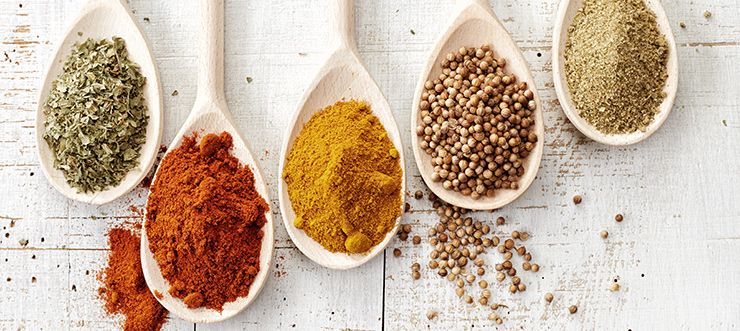
Spices refer to different parts of plants used for flavoring food or to make food smell good. The organic compounds that provide fragrance in spices come from oils and volatile oils, while the spicy taste comes from resins.
Spices contain several types of compounds such as starch, sugars, minerals, vitamins, and other compounds, which have properties to reduce cancer risk and also stimulate the immune system.
Benefits of spices
- Chili contains Capsaicin which helps increase metabolic processes in the body and reduce cancer risk.
- Turmeric contains Curcuminoids which help lower cholesterol, thus reducing the risk of heart diseases and also help prevent colorectal cancer.
- Garlic has Dially Sulphide, which helps reduce cancer risk.
- Ginger has [6]-Gingerol, which helps reduce the absorption of LDL Cholesterol and helps prevent colorectal cancer.
5) Increase antioxidants
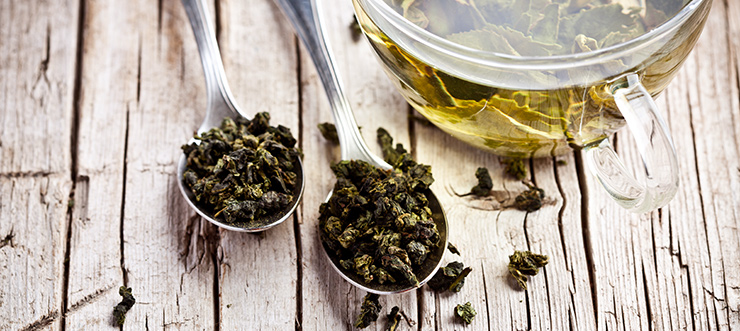
Natural drinks contain antioxidants, help quench thirst, and refresh the body. These drinks can be prepared from different parts of plants such as leaves, fruits, seeds, roots, etc.
- Green tea has Epigallocatechin Gallate [EGCG], which helps reduce the risk of cancer cells. To fully benefit from green tea, it should be consumed immediately after brewing as leaving green tea exposed to air will react with oxygen, depleting its nutritional values. Besides green tea, there are also vegetable and fruit juices, including various popular herbs used as drinks, such as carrot juice, butterfly pea flower juice, ginger juice, orange juice, sour sop juice, etc.
6) Cook food properly

The correct cooking method is important, which includes:
- Do not charbroil or smoke meat until it’s burnt Charbroiling or smoking meat until it’s crispy can lead to carcinogens. Cooking food in a microwave before grilling and removing the charred parts before consumption helps reduce these toxins.
- Avoid eating food that is raw or undercooked especially freshwater fish with scales. Eating raw or undercooked food may lead to liver fluke infection and chronic inflammation, resulting in cancer. Therefore, it’s advisable to properly cook these foods before consumption to reduce the risk of disease.
- Do not use oil for frying repeatedly Oil that is reused for frying for too long decreases in nutritional value and increases the risk of disease. Therefore, it’s advisable to avoid eating fried foods from shops that use oil that smells rancid, dark in color, or produces many bubbles.
7) Avoid fatty foods

Fats in food can be found both in plants and animals, with fatty acids as the main component, which can be divided as follows:
- Saturated fatty acids are found mostly in animal-based foods and some plant oils such as butter, animal fat, coconut milk, coconut oil, and palm oil. If the body receives too much saturated fatty acids, it could lead to high blood pressure and heart disease.
- Unsaturated fatty acids are found in soybean oil, corn oil, safflower oil, sunflower oil, and fish such as sardines, salmon, tuna, mackerel, etc. Consuming these fatty acids can help reduce LDL Cholesterol, or “bad” cholesterol levels in the blood, thus reducing the risk of heart disease.
8) Reduce red meat consumption

Red meat, such as pork, beef, and lamb, is high in saturated fats. Regular consumption of red meat may increase the risk of colorectal and rectal cancer, breast cancer, and obesity. Therefore, it’s advisable to limit consumption to no more than 500 grams per week to reduce cancer risk.
Eating fish is another option, as fish is a high-protein food that is easily digested, and low in fat. Additionally, deep-sea fish have been found to contain Omega-3 fatty acids, a type of essential unsaturated fat beneficial for the brain, liver, and nervous system, including learning development.
9) Minimize curry salts and pickled foods

Curry salts, sea salts, and rock salts are household staples used to add a salty taste to food, but it’s always important to remember that the body should not consume more than 6 grams of sodium per day.
Sodium plays a vital role in various body processes, but if consumed in excess, it can also be harmful. It is found abundantly in salted meat, salted fish, fish sauce, pickled vegetables, and pickled fruits, etc. Thus, to reduce cancer risk, it’s recommended to decrease consumption of pickled foods or processed foods, especially those preserved or colored with alum.